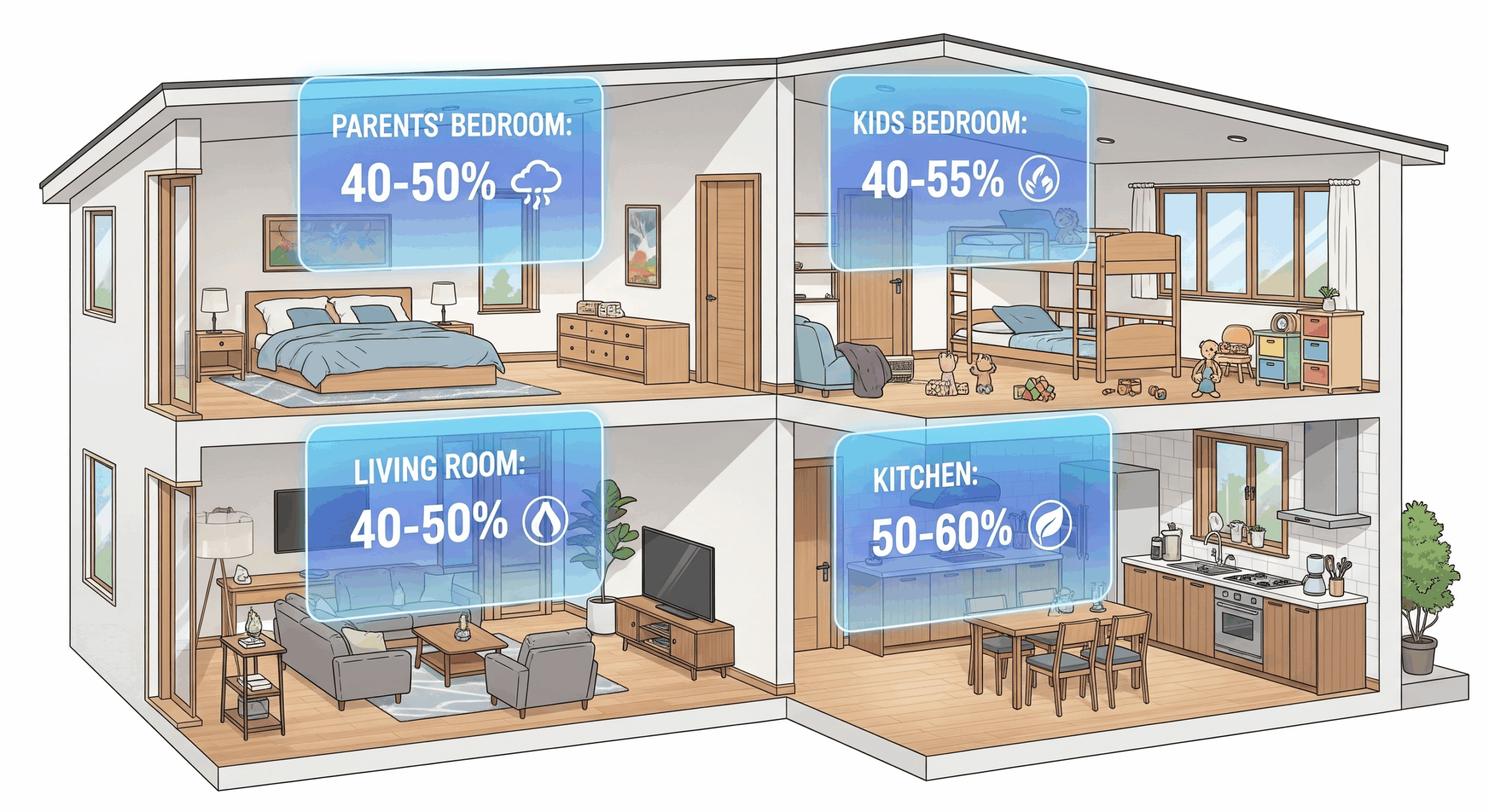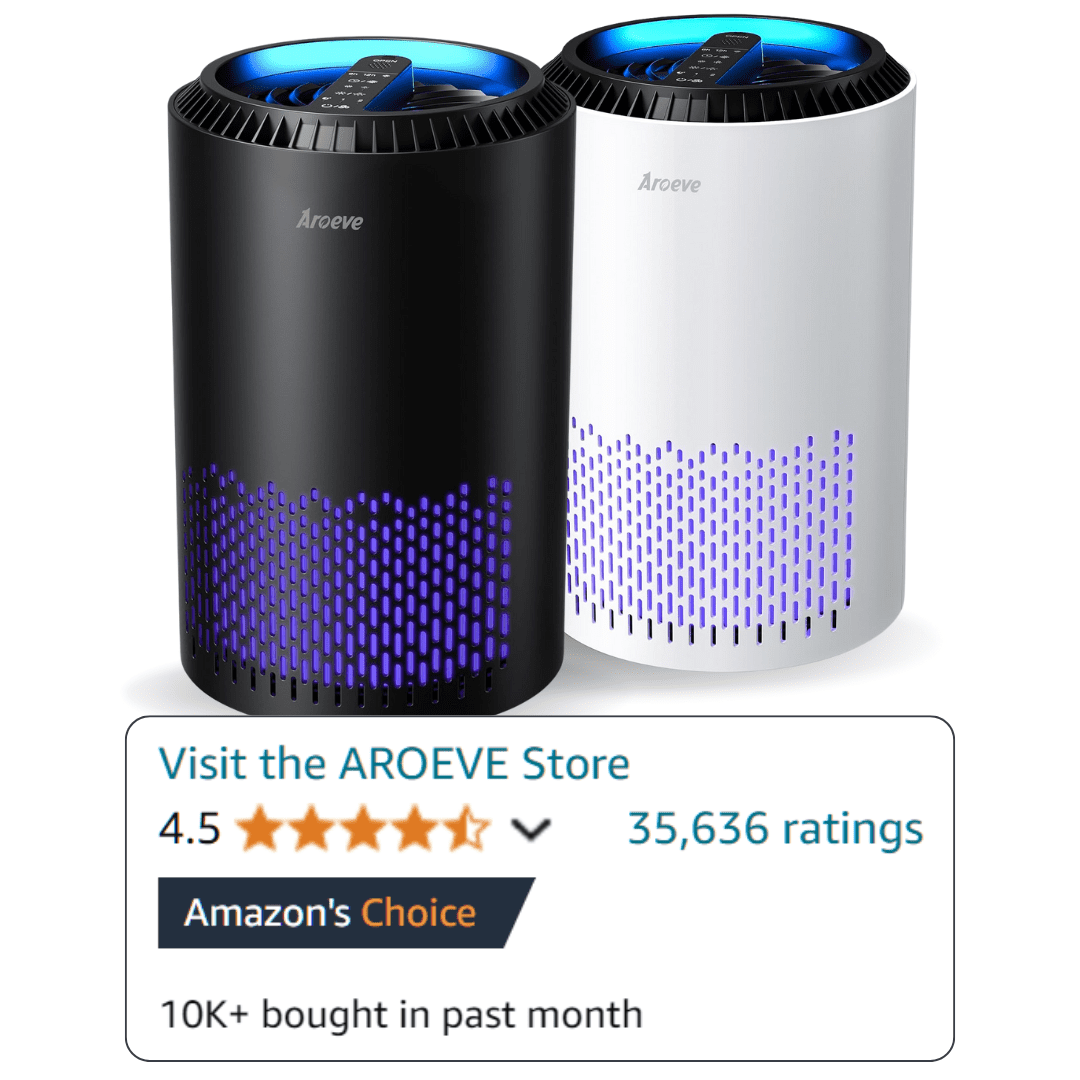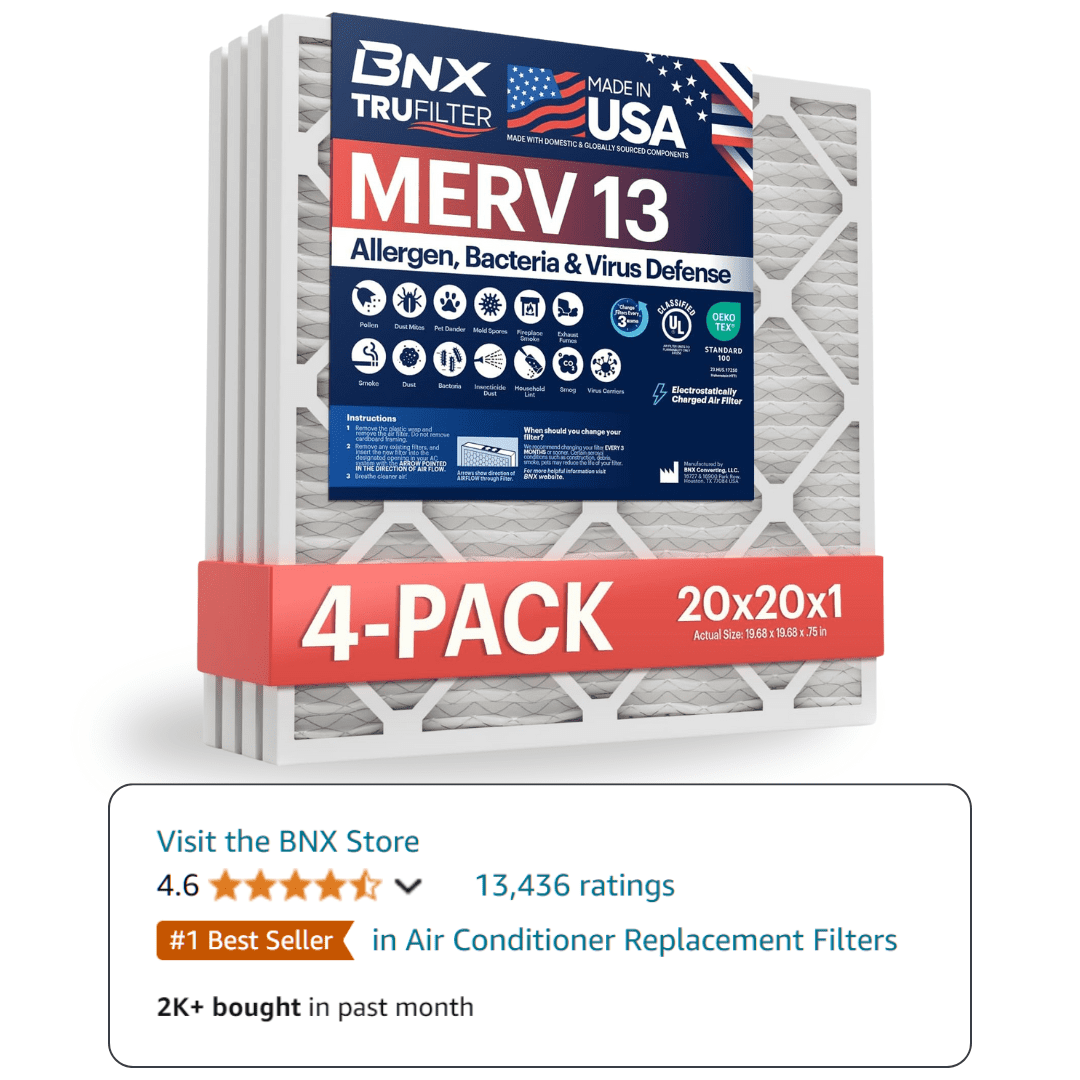What Are Normal Humidity Levels? (The 40-60% Rule Explained)
Understanding Relative Humidity vs Absolute Humidity
Relative humidity (RH) is the percentage of water vapor in the air compared to the maximum it can hold at a given temperature. Absolute humidity is the actual amount of water vapor in the air, measured in grams per cubic meter. For indoor air quality, RH is the standard metric. The EPA and ASHRAE recommend keeping indoor RH between 40% and 60%. This range minimizes mold growth, dust mites, and respiratory irritation.
Why Room-Specific Humidity Matters
Not all rooms have the same humidity needs. Kitchens and bathrooms generate more moisture. Bedrooms and living rooms need stable humidity for comfort and sleep quality. Basements are prone to excess moisture and need tighter control. Room-specific targets help prevent mold, protect furnishings, and support health.
Health Impacts of Incorrect Humidity Levels
Low humidity (below 30%) dries out skin, eyes, and airways, increasing the risk of respiratory infections. High humidity (above 60%) encourages mold, dust mites, and bacteria. The NIH and Mayo Clinic both link improper humidity to asthma, allergies, and sleep disruption. Keeping each room in the recommended range reduces these risks.
Room-by-Room Humidity Guide
Living Room and Common Areas (45-55% RH)
The living room is where families spend the most time. Aim for 45-55% RH to balance comfort and health. This range prevents static electricity, keeps wood furniture from cracking, and reduces dust. If you notice condensation on windows or a musty smell, humidity is too high. If you get shocks from touching electronics, it’s too low.
Bedrooms (40-50% RH for Better Sleep)
Bedrooms need slightly lower humidity for optimal sleep and dust mite control. The NIH recommends 40-50% RH. This range helps prevent dry throat and nasal passages at night. It also discourages dust mites, which thrive above 50% RH. For children’s rooms and nurseries, stick to the lower end of this range to reduce allergy risks.
Kitchen (45-55% RH, Managing Cooking Moisture)
Cooking and dishwashing add moisture to the air. Keep kitchen RH between 45-55%. Use exhaust fans while cooking and after washing dishes. If you see condensation on cabinets or walls, run a dehumidifier or increase ventilation. This prevents mold and protects cabinetry.
Bathroom (50-60% RH, Preventing Mold)
Bathrooms are the most humid rooms in the house. Keep RH at 50-60% but never above. Always use a vent fan during and after showers. If you see mold on grout or ceilings, humidity is too high. Install a humidity-sensing fan for automatic control.
Basement (30-50% RH, Moisture Control)
Basements are prone to dampness and mold. Keep RH between 30-50%. Use a dehumidifier year-round. Check for condensation on pipes and walls. If you store items in the basement, keep them off the floor and away from walls to prevent mold. For more on this, see our guide to basement dehumidification.
Nursery and Children’s Rooms (40-50% RH)
Infants and children are sensitive to air quality. Maintain 40-50% RH to prevent respiratory irritation and reduce the risk of dust mites. Use a digital hygrometer to monitor levels. Avoid humidifiers that lack automatic shutoff to prevent over-humidification.
Seasonal Humidity Adjustments
Winter Humidity Management (30-40% RH)
Cold air holds less moisture. In winter, indoor RH can drop below 30%. This causes dry skin, static, and respiratory discomfort. Use a humidifier to keep RH at 30-40%. Seal windows and doors to prevent drafts. For more, see our article on winter humidification.
Summer Humidity Control (45-55% RH)
Warm air holds more moisture. In summer, RH can spike above 60%. Use air conditioning and dehumidifiers to keep RH at 45-55%. Run exhaust fans in kitchens and bathrooms. If you live in a humid climate, consider a whole-home dehumidifier.
Spring and Fall Transitions
During spring and fall, outdoor humidity fluctuates. Monitor indoor RH weekly. Adjust humidifiers and dehumidifiers as needed. Open windows on dry days to balance indoor air. Use a hygrometer to track changes.
How to Measure and Monitor Room Humidity
Digital Hygrometers vs Smart Monitors
A digital hygrometer is the simplest way to measure RH. Place one in each major room. For more advanced tracking, use a smart monitor that logs data and alerts you to changes. Choose devices with calibration features for accuracy. The EPA recommends regular calibration for reliable readings.
Placement Tips for Accurate Readings
Place hygrometers at chest height, away from direct sunlight, vents, and windows. Avoid placing them near humidifiers or dehumidifiers. For bathrooms and kitchens, keep the device away from direct steam sources.
When to Check Humidity Levels
Check humidity daily during season changes and after major weather events. Otherwise, weekly checks are enough. If you notice condensation, static, or musty odors, check immediately. For more on monitoring, see humidity monitoring.
Solutions for Humidity Problems
Too High: Dehumidifiers and Ventilation
If RH is above target, use a dehumidifier. Choose a model sized for the room. For kitchens and bathrooms, run exhaust fans during and after use. In basements, use a continuous drain dehumidifier. For whole-home issues, consider an HVAC-integrated dehumidifier.
Too Low: Humidifiers and Moisture Sources
If RH is below target, use a humidifier. Ultrasonic and evaporative models are best for bedrooms and living rooms. For large spaces, use a whole-home humidifier connected to your HVAC. Add moisture by placing water basins near heat sources. Avoid over-humidifying, which can cause mold.
Whole-Home vs Room-Specific Solutions
Whole-home systems provide consistent RH throughout the house. They are best for large homes or climates with extreme seasonal swings. Room-specific devices are more affordable and flexible for targeted needs. For a cost analysis, compare installation and maintenance costs with your local HVAC contractor.
For more on how humidity affects air quality, see our comprehensive guide. Proper humidity management is a key part of a healthy home and improved indoor air quality.




